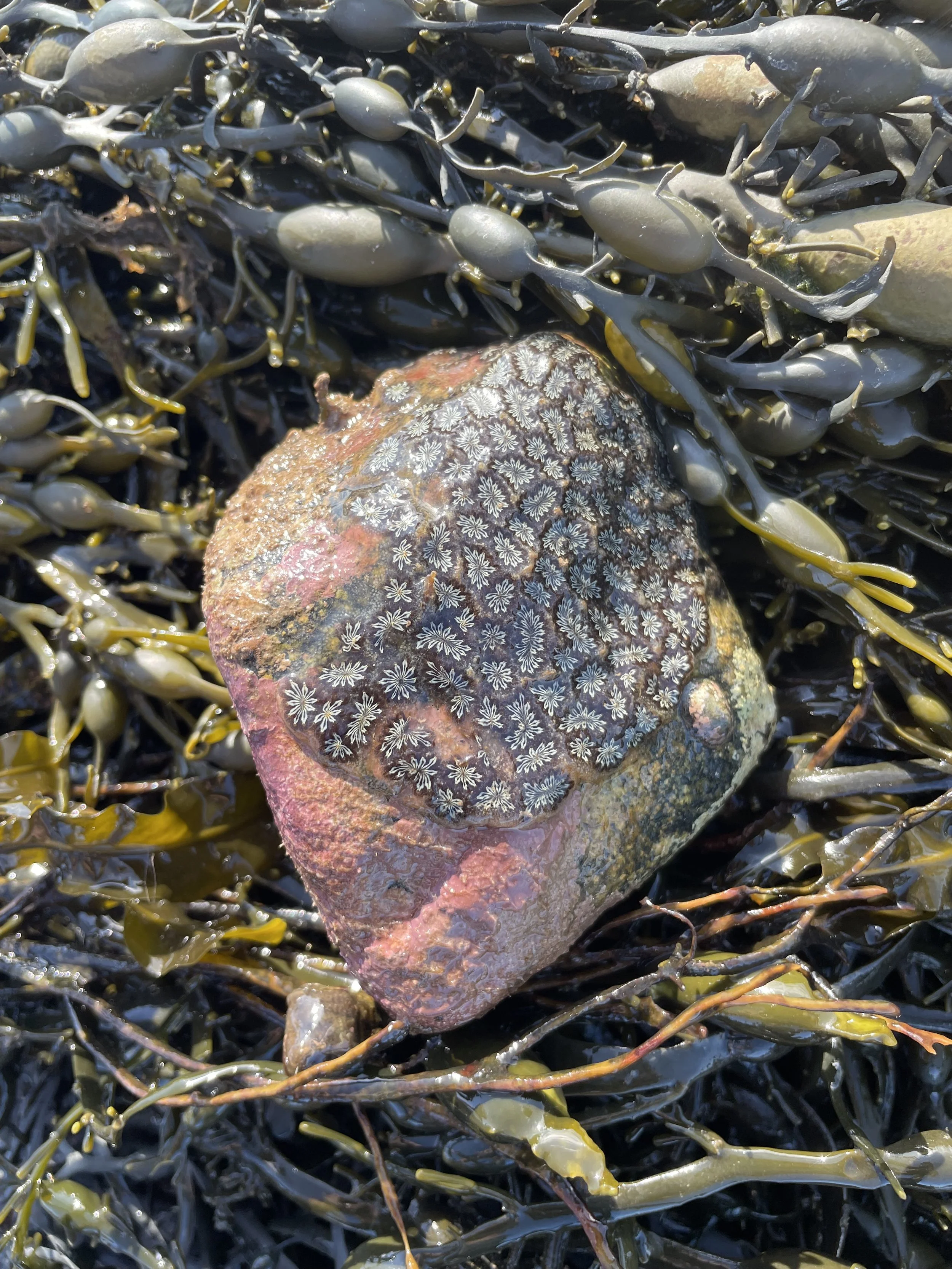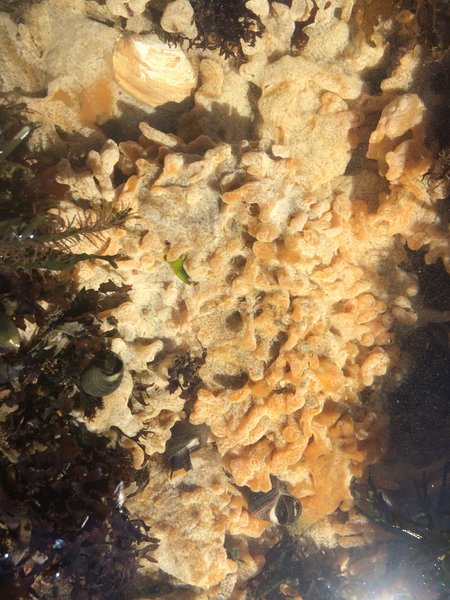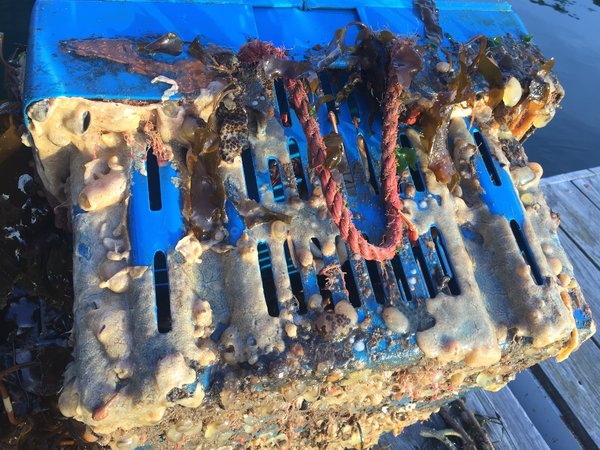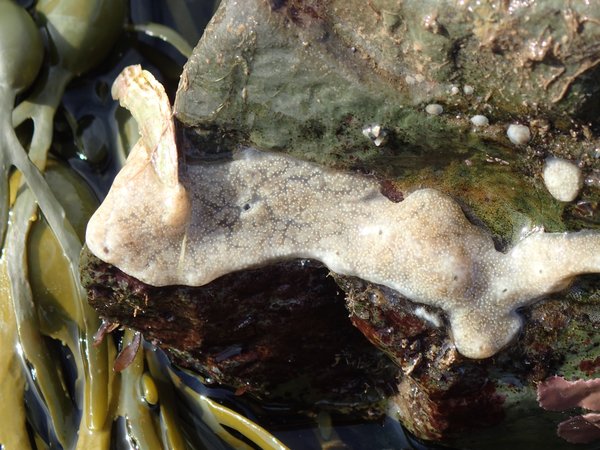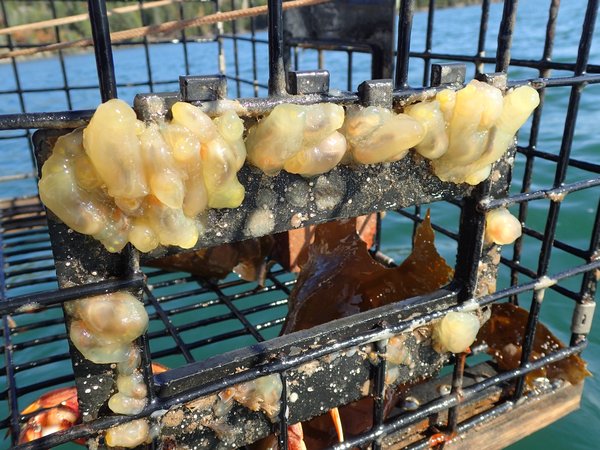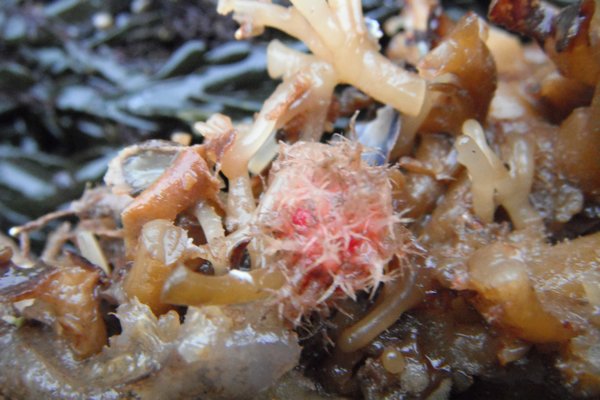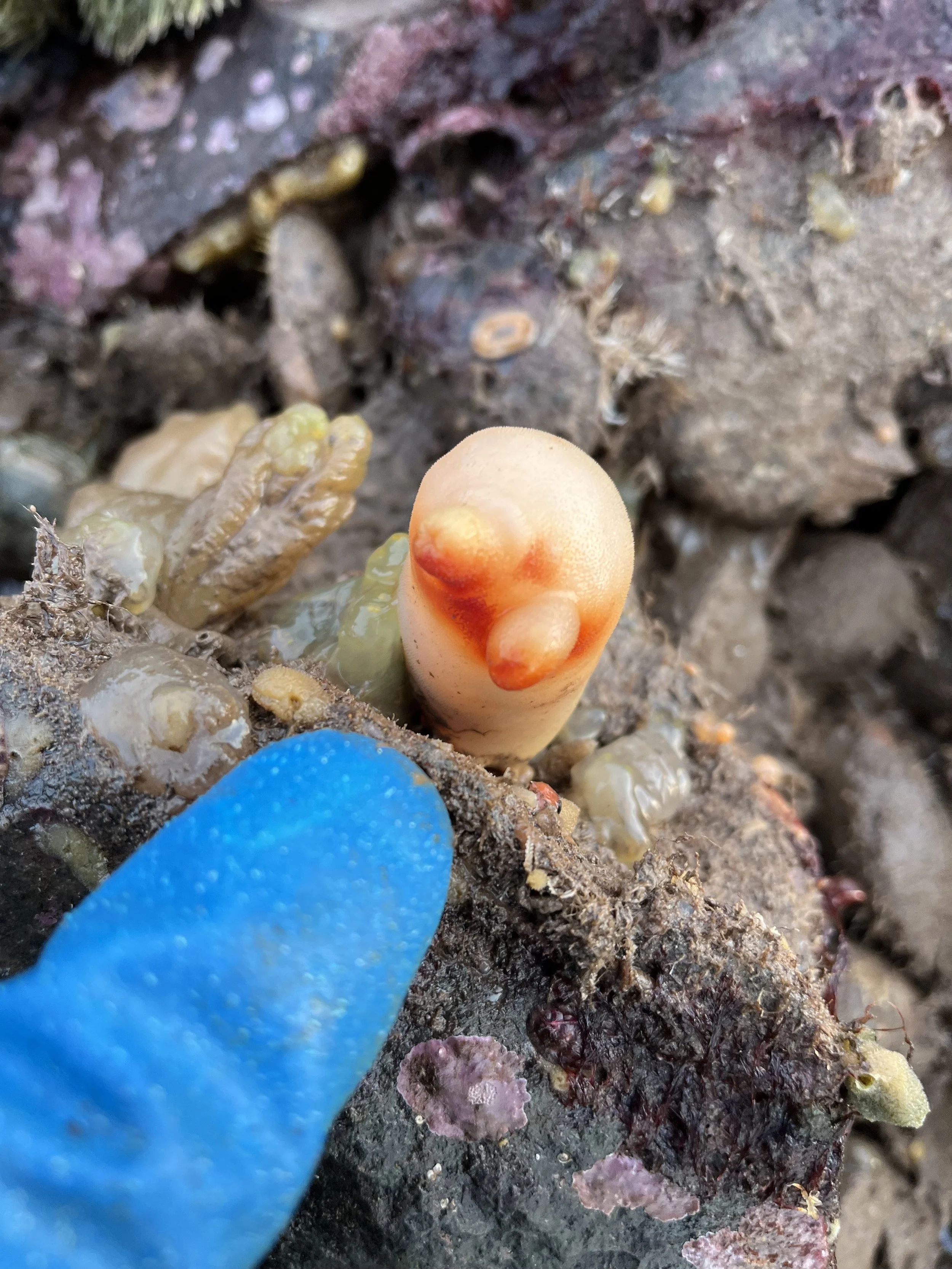Tidepool Tim says, "Golden star may be an invasive species and detrimental to some other organisms that it outcompetes, but it is a beautiful colonial tunicate. The zooids resemble tiny flowers that pulse with water flow. We find most colonies of this tunicate on docks & floats around our local shipping port in Eastport. It's easy to imagine that some large ship or even a working barge may have brought the species here to our waters. These tunicates spread rapidly across the seafloor and can out-compete barnacles, mussels, snails, and some algal species. They are hermaphrodites. They filter their food from the water with individual siphons, but excrete through a central pore. This is what gives them the 'star' look. Besides the very pretty black and white colonies, they can be yellow, orange, & red globby-looking masses.”



